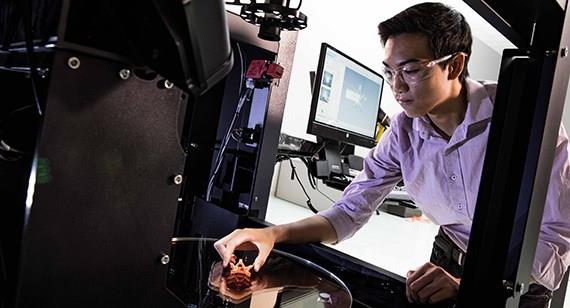Read the blog post
Many of our customers require finished parts straight from the plastic injection moulding or CNC machining process. Many others, however, want or need additional ‘secondary operation’ performed on their manufactured parts. These operations are what are known as ‘Secondary Services’ and they can be an integral part of a customer’s project requirement.
Why Secondary Services?
Secondary services may be required to meet the process control, functional or cosmetic (typically branding or labelling) needs for a specific project. The necessity of these additional services are determined by that specific need.
The customer may have very specific design and development process monitoring requirements (the need to monitor and record part dimensions) where additional part sampling and detailed measurement may be required
The individual parts may be part of an assembly, with the need for sub-assembly and final assembly.Automating sub assembly and final assembly for low-volume production may not be financially viable for the customer, so providing these customers with some parts sub-assembled, simplifies final production and both time and money is the realised benefit.
Common Secondary Services
There is a wide range of secondary and supporting services that could be provided for injection moulded and CNC machined parts. Common services could include:
Detailed inspection and measurement services (to support PPAP and other industry quality monitoring processes) Anodising of CNC machined aluminium parts Customer mould texturing Ultrasonic welding. Ultrasonic welding uses high-frequency ultrasonic acoustic vibrations to create a solid-state weld between two components. It is especially useful in joining dissimilar materials. It can also be used to place metal inserts into plastic parts after moulding. Heat staking. In heat staking, metal or threaded inserts are placed into plastic parts after the injection moulding process is complete, using heat and pressure to position the insert. Pad printing. In pad printing, a steel plate with an etched design is loaded with ink that is then transferred to a moulded plastic part. The process can be used to quickly and efficiently add a logo, part number, instructional graphics, or other words or images to a part. Hard form in-mould labelling (IML). IML uses a printed label that is positioned in a mould prior to the injection of the molten resin. When the plastic fills the mould, the label becomes permanently adhered to the part.
Laser etching and part marking. Laser etching involves marking a plastic part with a laser to create a contrasting image or text. At Protolabs we are rolling out our secondary services offer starting with:
Inspection and measurement Mould texturing Anodising Simple assembly
End-to-end rapid part manufacturing
Whether you simply need a part straight from the mould or CNC mill or have a project that calls for Secondary Services, we can support you to ensure you get exactly the end result you’re looking for. To discuss your requirements, please contact your Account Manager or customerservice@protolabs.co.uk. We look forward to learning about your project.